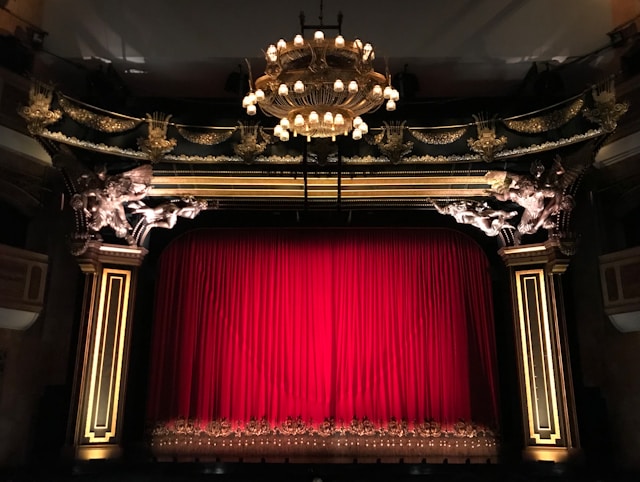Introduction
The landscape of acting has transformed dramatically with the advent of advanced technologies like Virtual Reality (VR) and Motion Capture (MoCap). These innovations have revolutionized how actors perform and how their performances are captured and translated onto the screen. This article delves into the roles of VR and MoCap in modern acting, highlighting their benefits, challenges, and the future potential of these technologies in the entertainment industry.
Virtual Reality in Acting
Immersive Training Environments
Virtual Reality provides actors with immersive training environments that simulate real-life scenarios or fantastical settings. This technology allows actors to practice their craft in diverse and controlled environments, enhancing their ability to adapt and perform convincingly.
“VR enables actors to experience and interact with their environments in ways that traditional sets can’t replicate,” explains Dr. Laura Michaels, a professor of digital media.
Virtual Auditions
VR is also transforming the audition process. Virtual auditions can be conducted remotely, allowing casting directors to see actors perform in a variety of settings and scenarios without geographical constraints. This not only saves time and resources but also broadens the pool of talent available for consideration.
“Virtual auditions have made it easier for us to find the perfect fit for a role, regardless of where an actor is located,” says casting director Jane Roberts.
Character Development
VR aids in character development by providing actors with a deeper understanding of the world their characters inhabit. By immersing themselves in virtual settings, actors can better grasp the nuances of their roles and deliver more authentic performances.
“Experiencing a character’s world through VR helps me connect with the role on a deeper level,” shares actor Mark Stevenson.
Motion Capture Technology
Capturing Nuanced Performances
Motion Capture technology captures an actor’s movements and translates them into digital characters. This technology is essential for creating realistic and nuanced performances in animated films and video games.
“MoCap allows us to capture the subtleties of an actor’s performance, from facial expressions to body language,” explains MoCap specialist Dr. Emily Clark.
Enhancing CGI Characters
MoCap is crucial in bringing CGI characters to life. It ensures that digital characters move and express themselves in ways that are consistent with human anatomy and behavior, adding depth and realism to their portrayals.
“Without MoCap, our CGI characters would lack the believability and emotional depth that audiences expect,” notes visual effects artist John Mills.
Physicality and Stunt Work
Actors using MoCap often perform their own stunts, allowing for more seamless integration of action sequences. This reduces the reliance on stunt doubles and enhances the authenticity of the performance.
“Performing my own stunts in a MoCap suit makes the action sequences feel more genuine,” states actor and stunt performer Alex Turner.
Challenges and Considerations
Technical Limitations
While VR and MoCap offer numerous benefits, they also come with technical limitations. VR can cause motion sickness in some users, and MoCap requires sophisticated equipment and expertise to execute properly.
“Technical challenges are part of the learning curve with these technologies, but the benefits far outweigh the drawbacks,” comments Dr. Robert Hayes, a technology consultant.
Cost and Accessibility
The cost of VR and MoCap technology can be prohibitive for smaller productions. However, as the technology becomes more widespread, costs are expected to decrease, making it more accessible to independent filmmakers and smaller studios.
“Initially, the cost was a barrier, but we’ve seen significant reductions as the technology advances,” says indie filmmaker Susan Lee.
Learning Curve for Actors
Actors must adapt to performing in MoCap suits or interacting with VR environments, which can be challenging. Training and experience are essential for actors to become comfortable with these technologies.
“There’s definitely a learning curve, but once you get the hang of it, it opens up a world of possibilities,” shares actor Rachel Adams.
Future Prospects
Integration with AI
The future of VR and MoCap in acting is likely to see further integration with Artificial Intelligence (AI). AI can enhance the capabilities of these technologies by improving real-time motion capture and generating more complex virtual environments.
“AI will take VR and MoCap to new heights, enabling more detailed and dynamic interactions,” predicts tech innovator Dr. Sarah Blake.
Expanding Creative Horizons
As VR and MoCap technologies continue to evolve, they will expand the creative horizons of filmmakers and game developers. New storytelling possibilities will emerge, allowing for more immersive and interactive experiences for audiences.
“These technologies are reshaping how we tell stories, making them more interactive and engaging than ever before,” notes director Michael Harris.
Broader Industry Adoption
With ongoing advancements and decreasing costs, VR and MoCap are expected to become standard tools in the entertainment industry. Their adoption will not only enhance production quality but also democratize access to advanced filmmaking techniques.
“We’re on the cusp of a new era where these technologies will be as common as cameras and lighting on set,” says industry analyst from miglioricasinoonlineaams.com.
Virtual Reality and Motion Capture are revolutionizing the field of acting, offering new tools and opportunities for actors and filmmakers alike. While there are challenges to overcome, the benefits of these technologies in enhancing performance, character development, and storytelling are undeniable. As VR and MoCap continue to evolve, they promise to further transform the entertainment industry, making it more dynamic and immersive for both creators and audiences.
